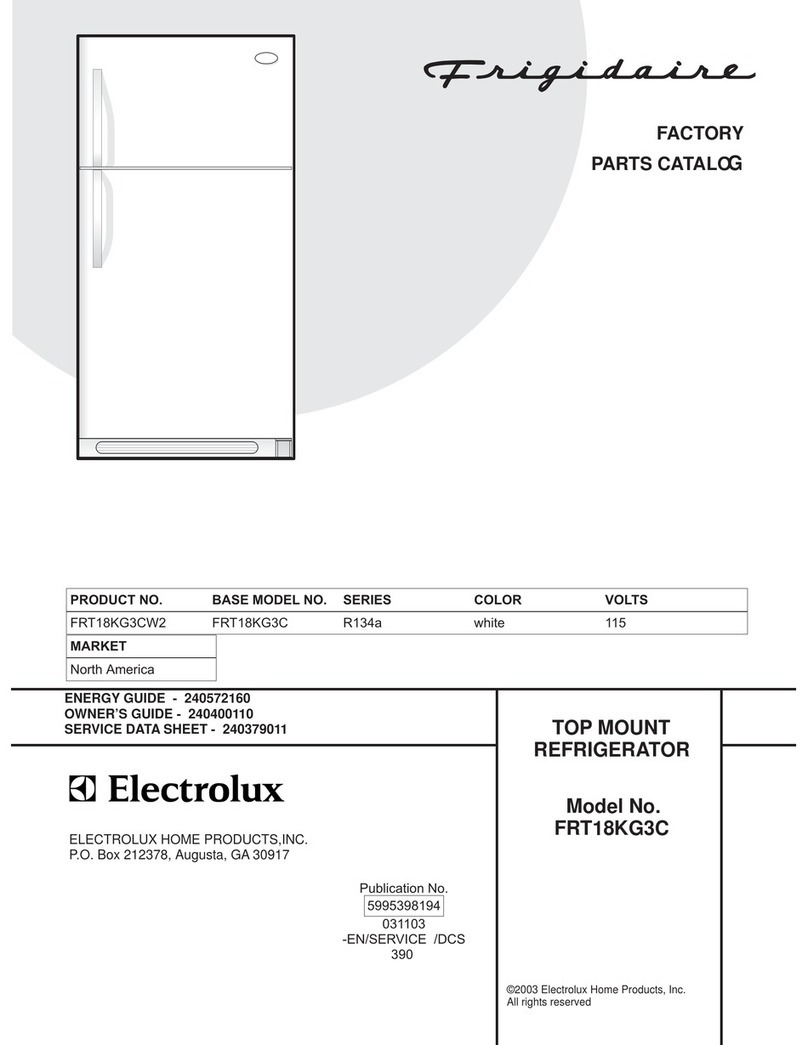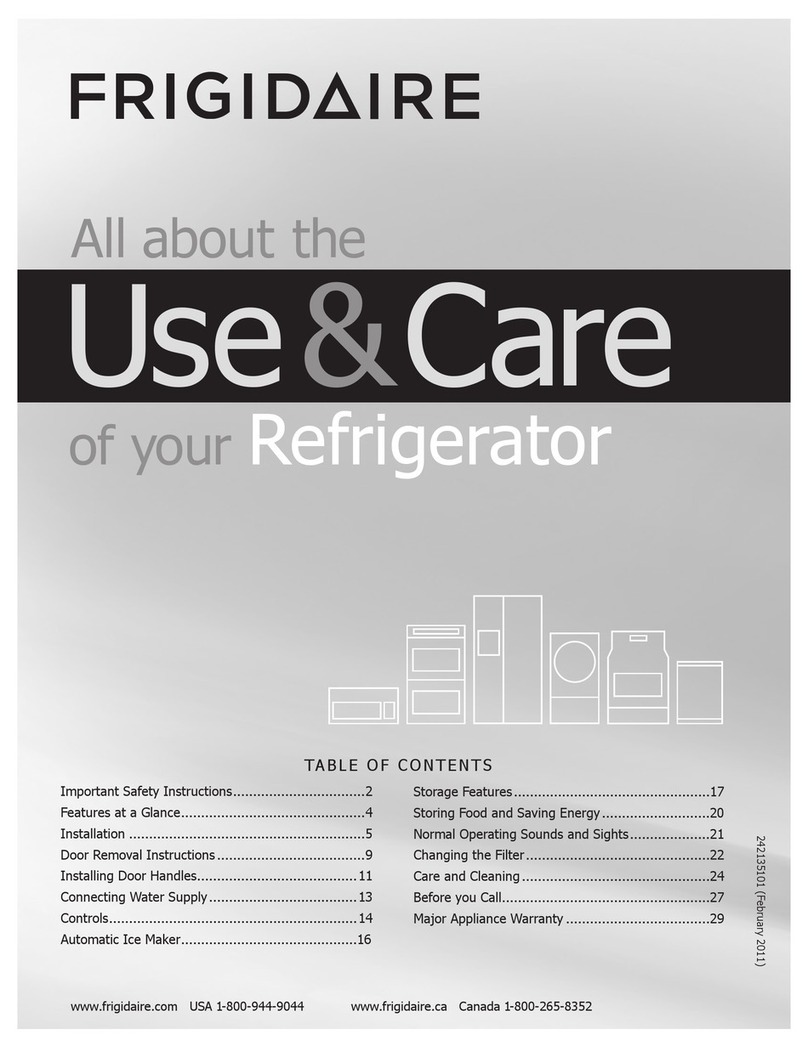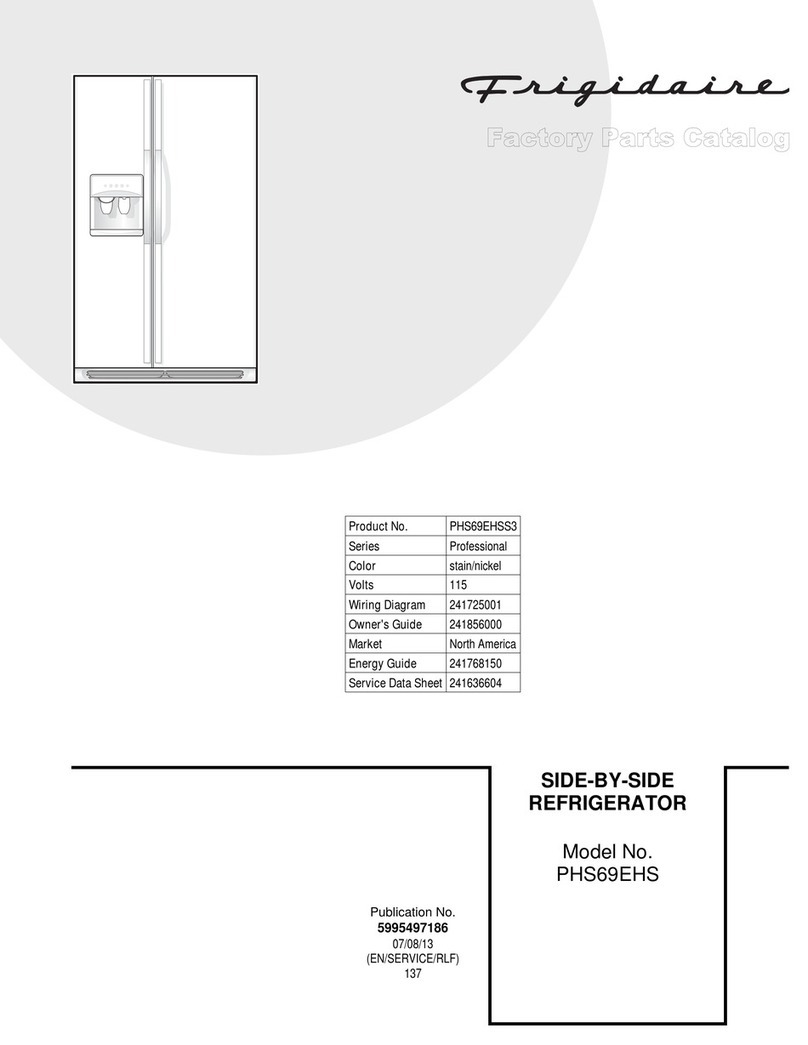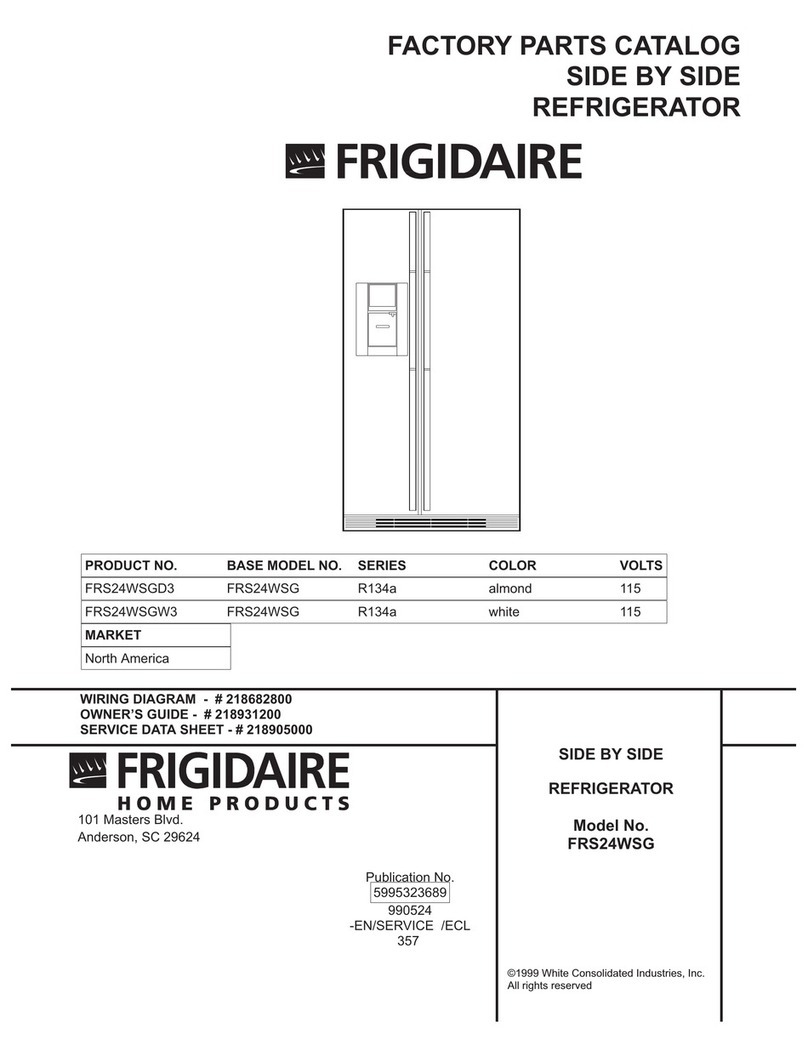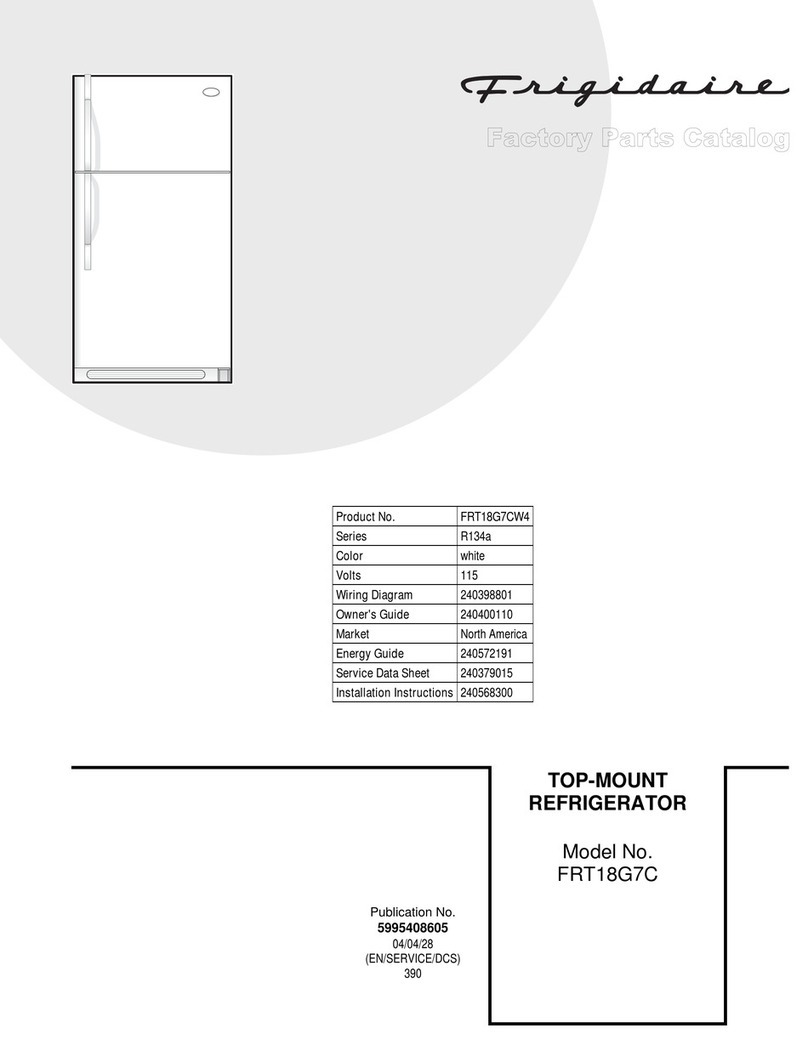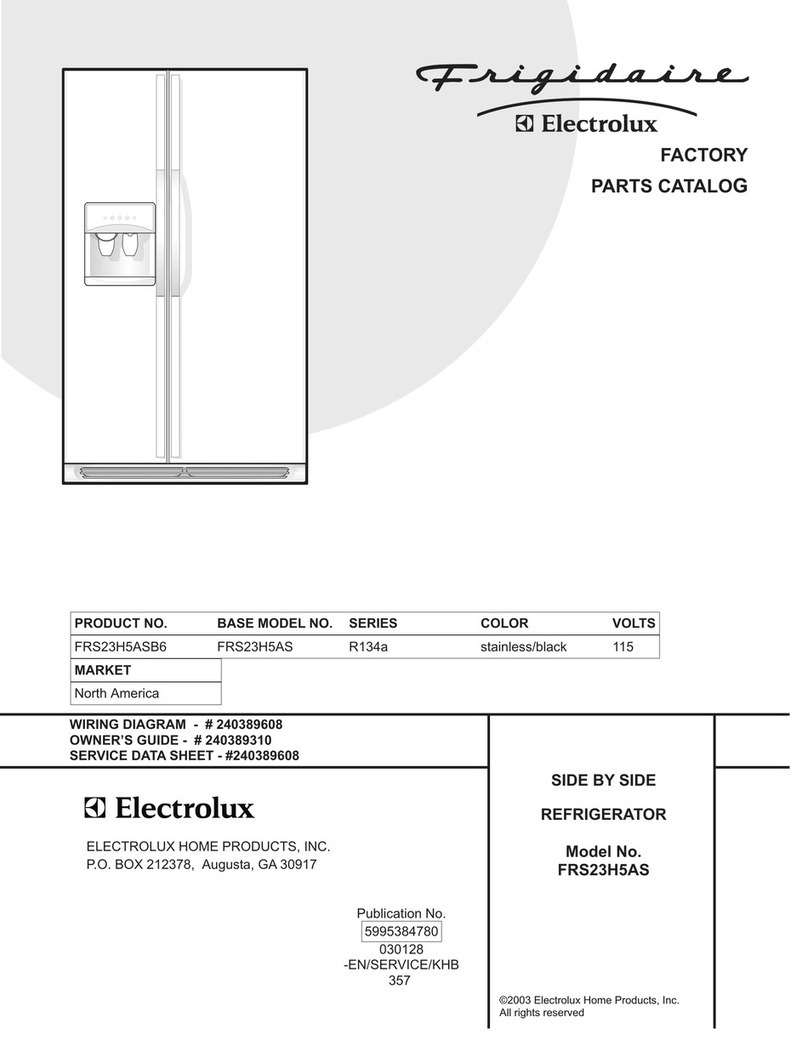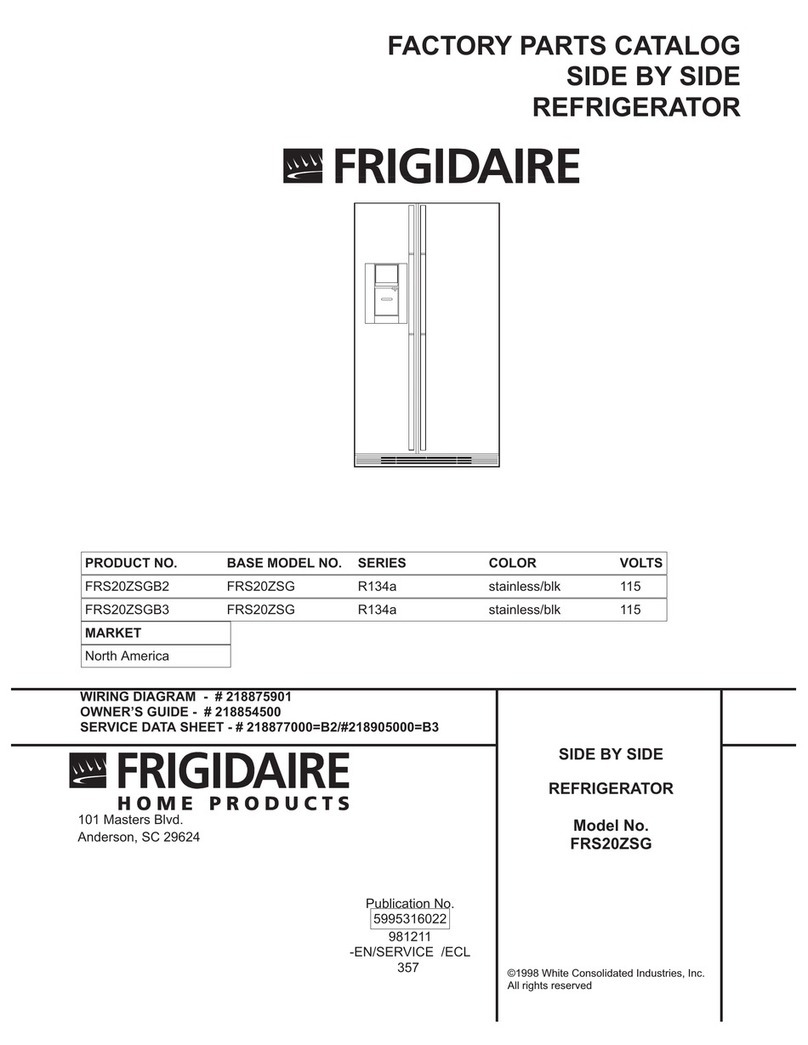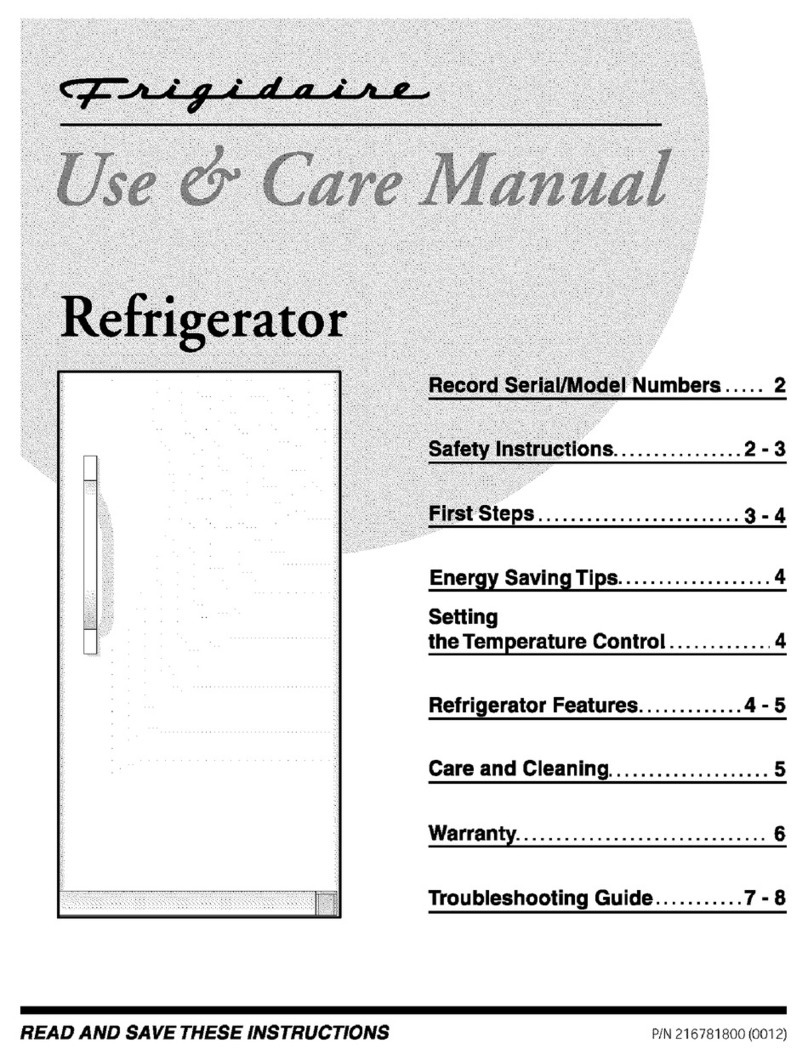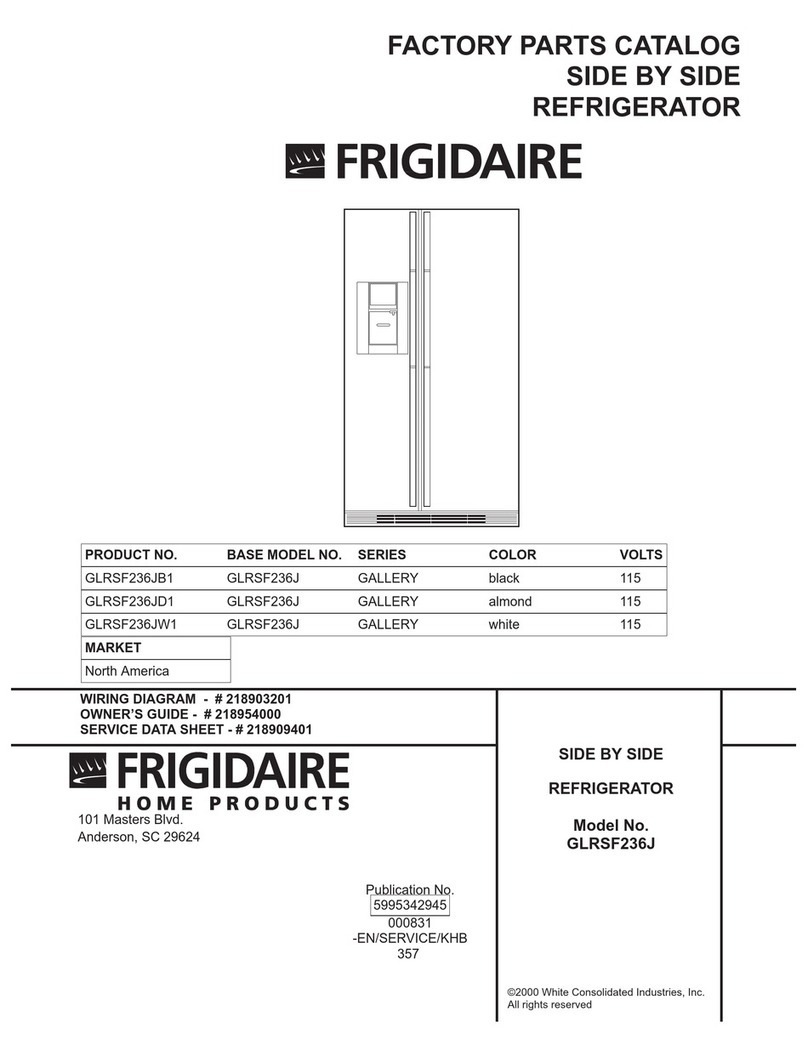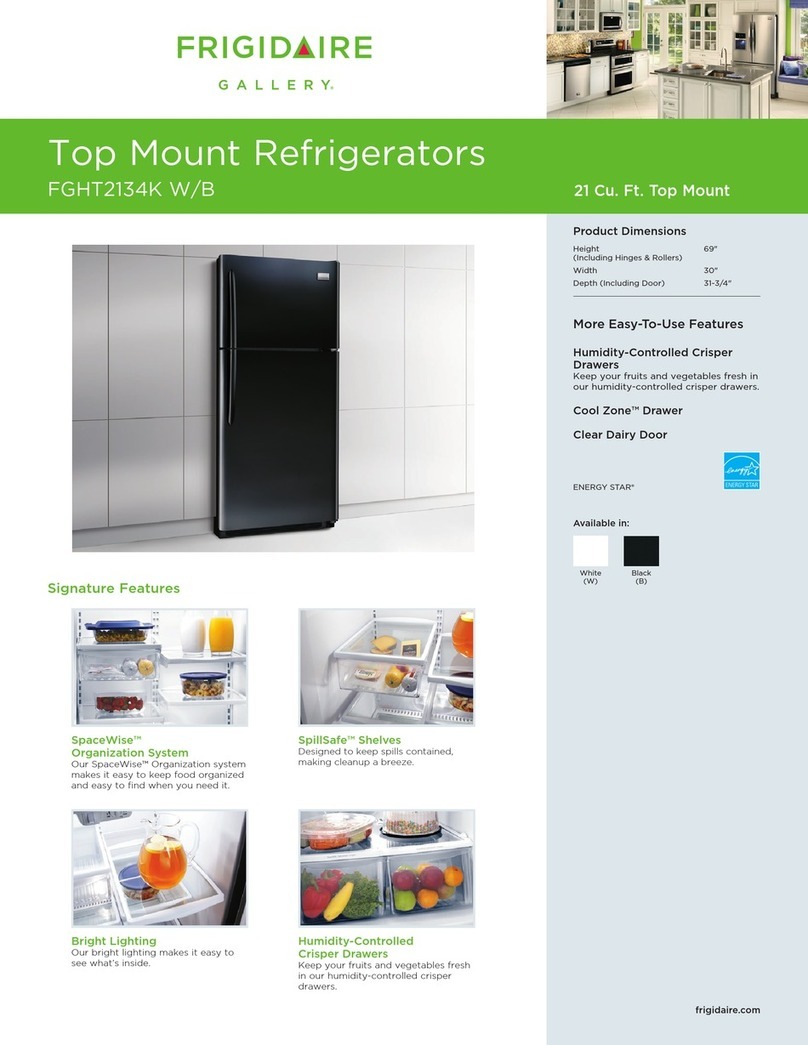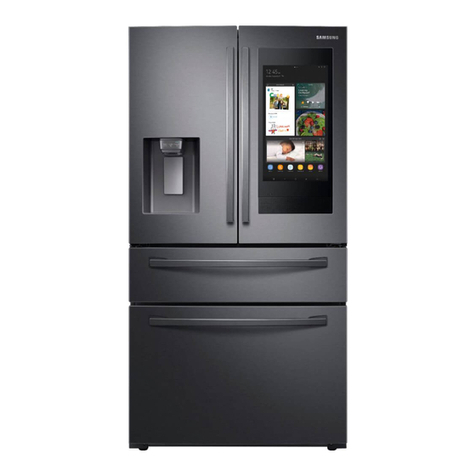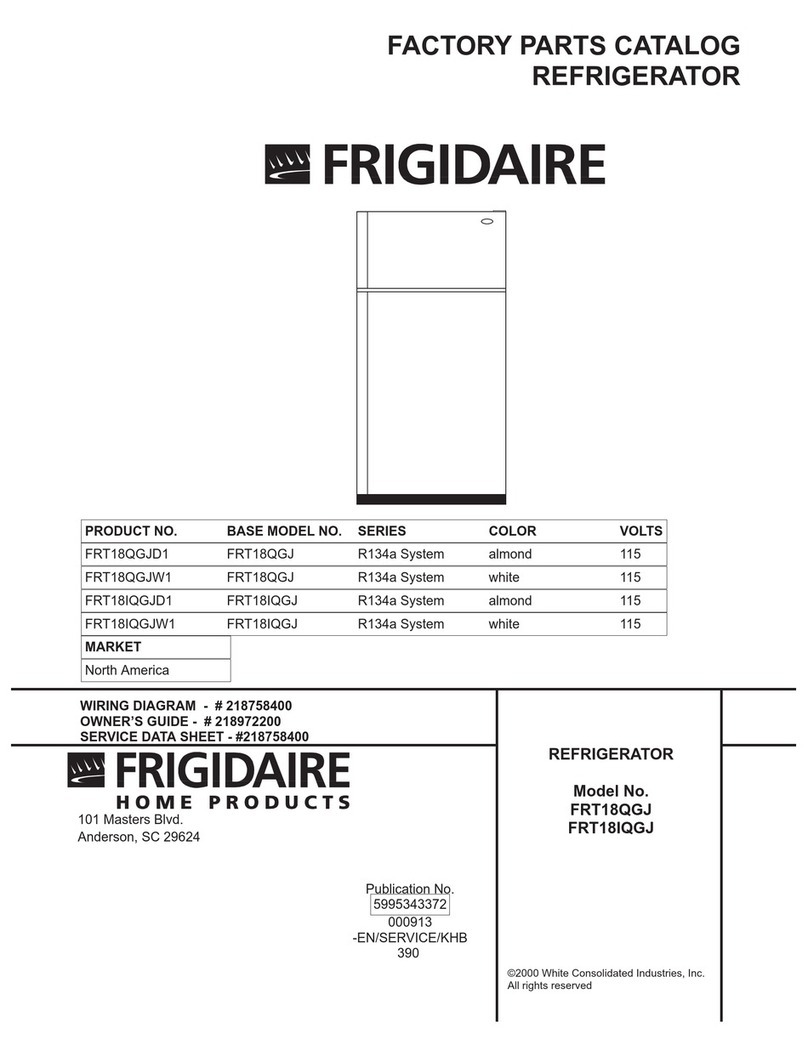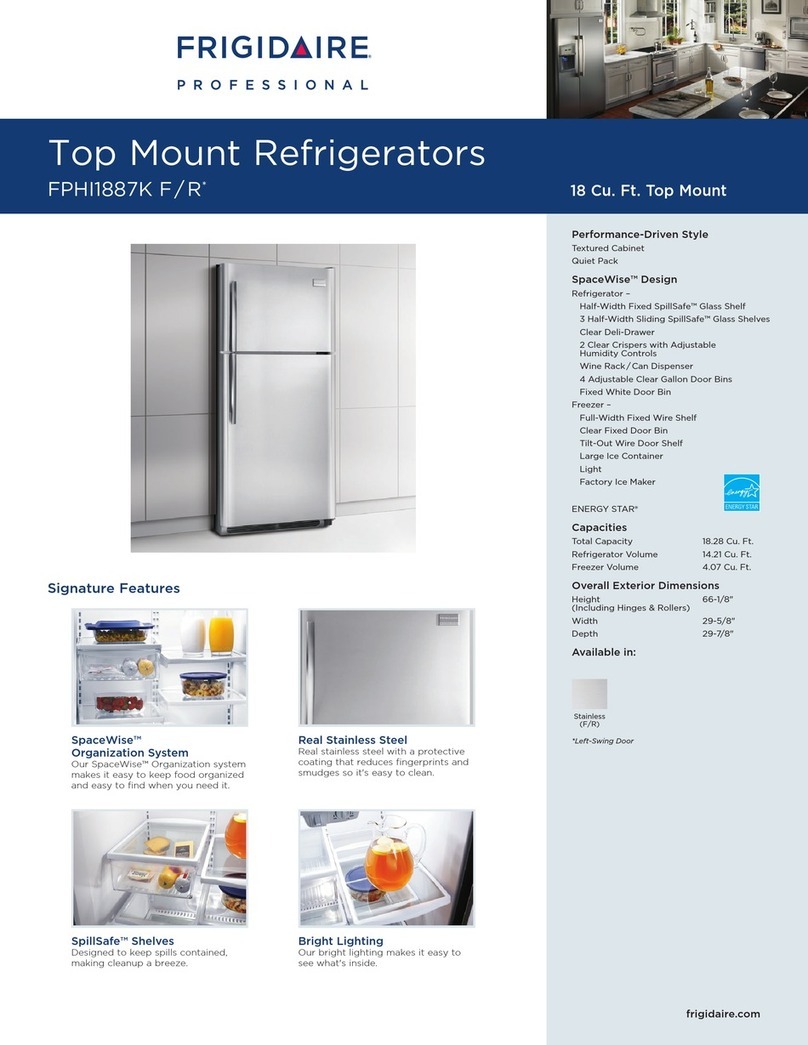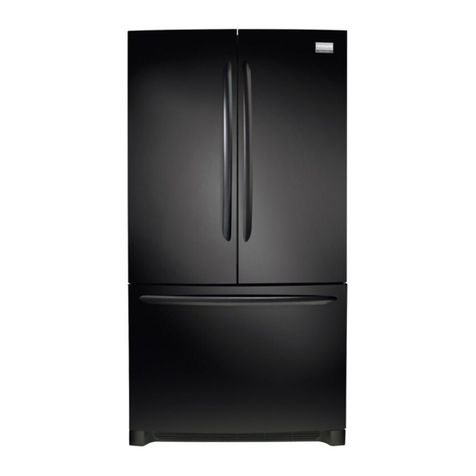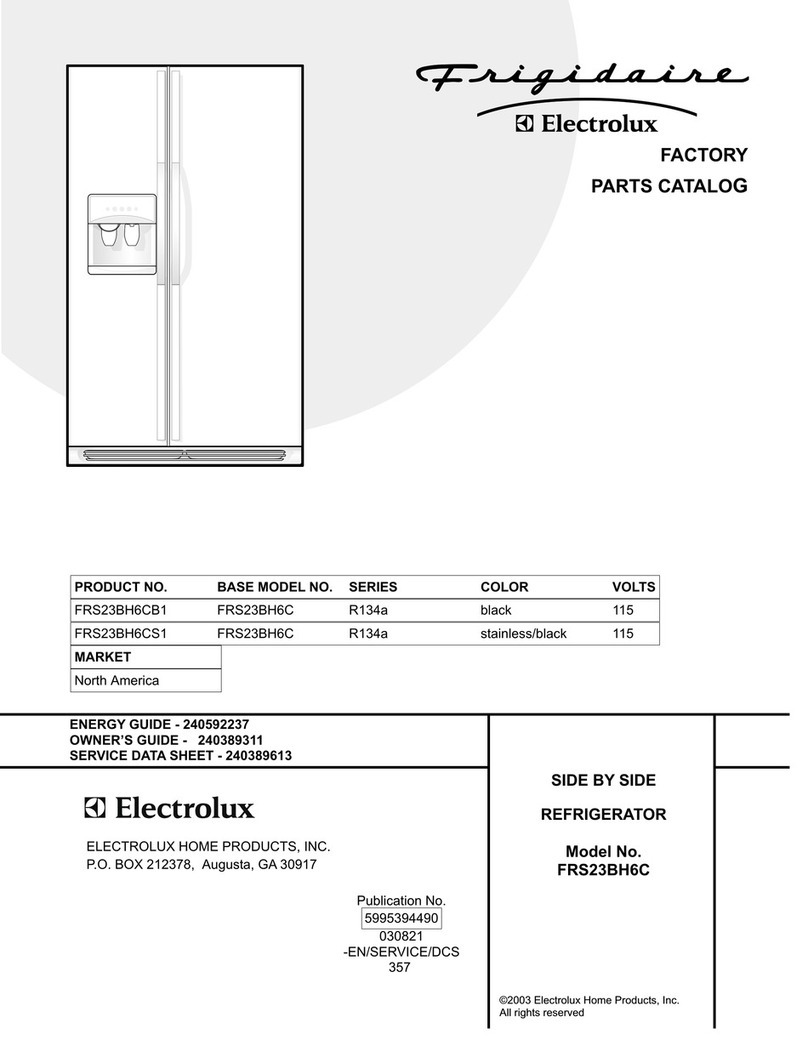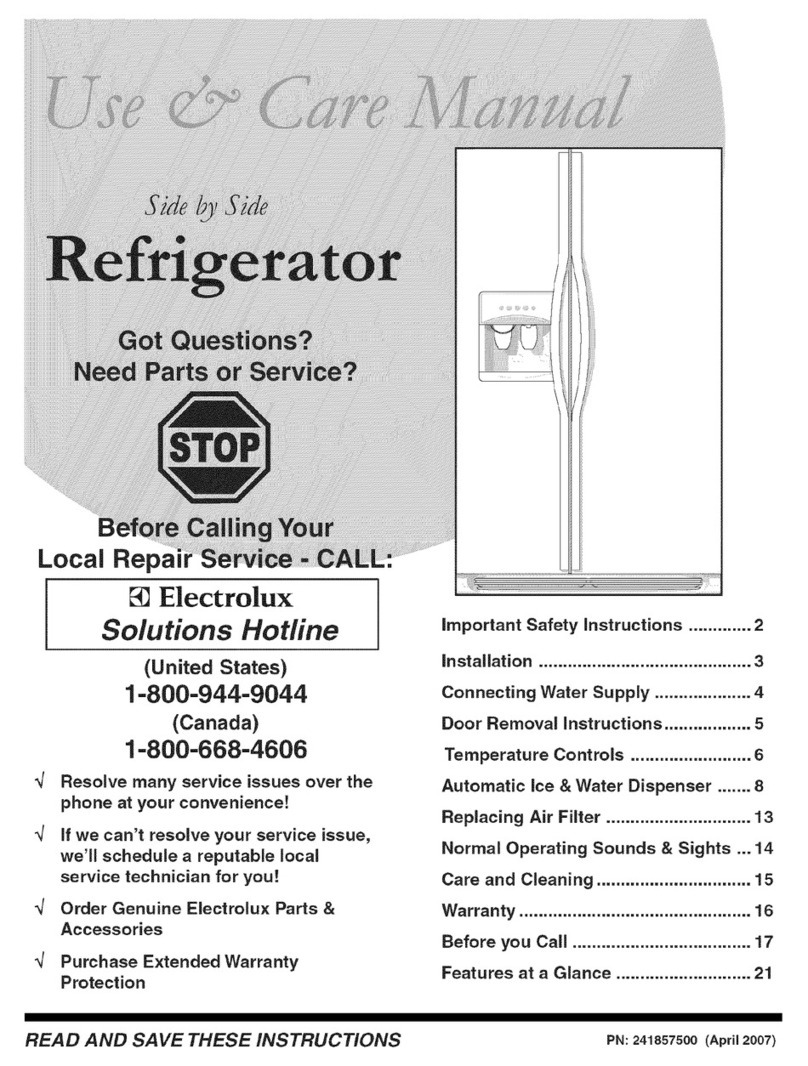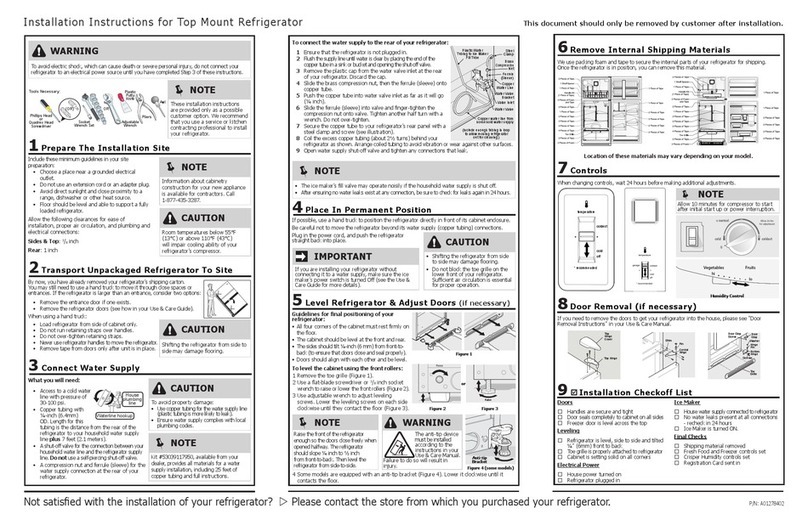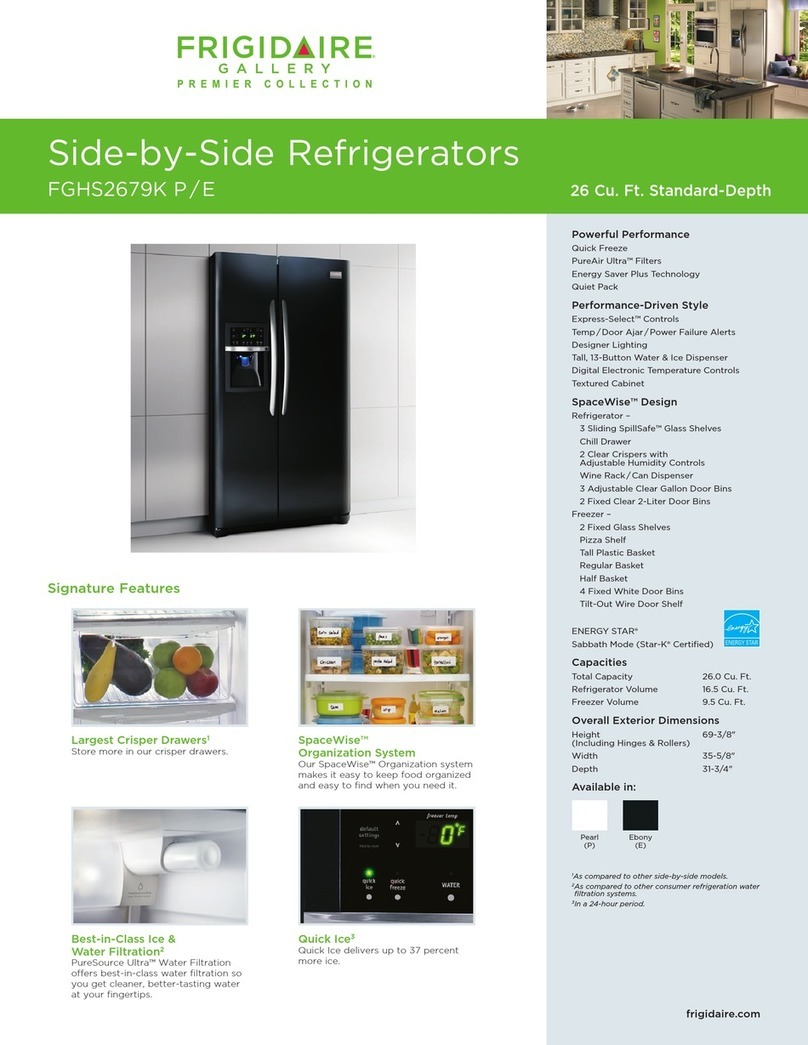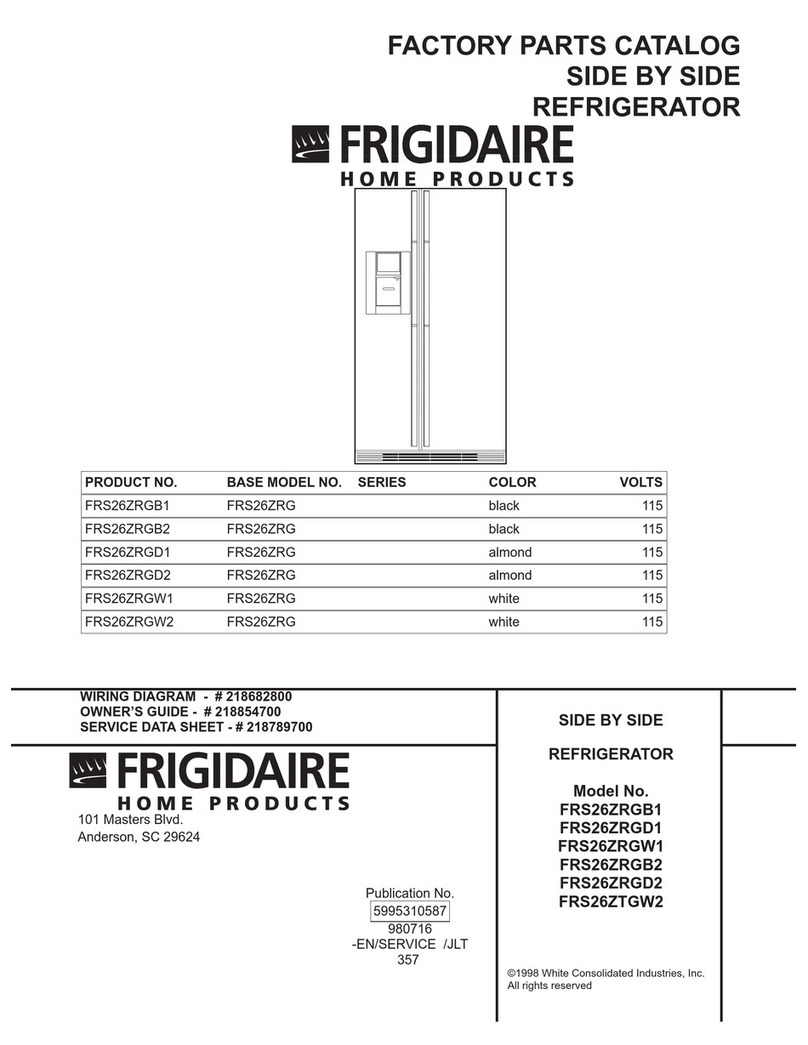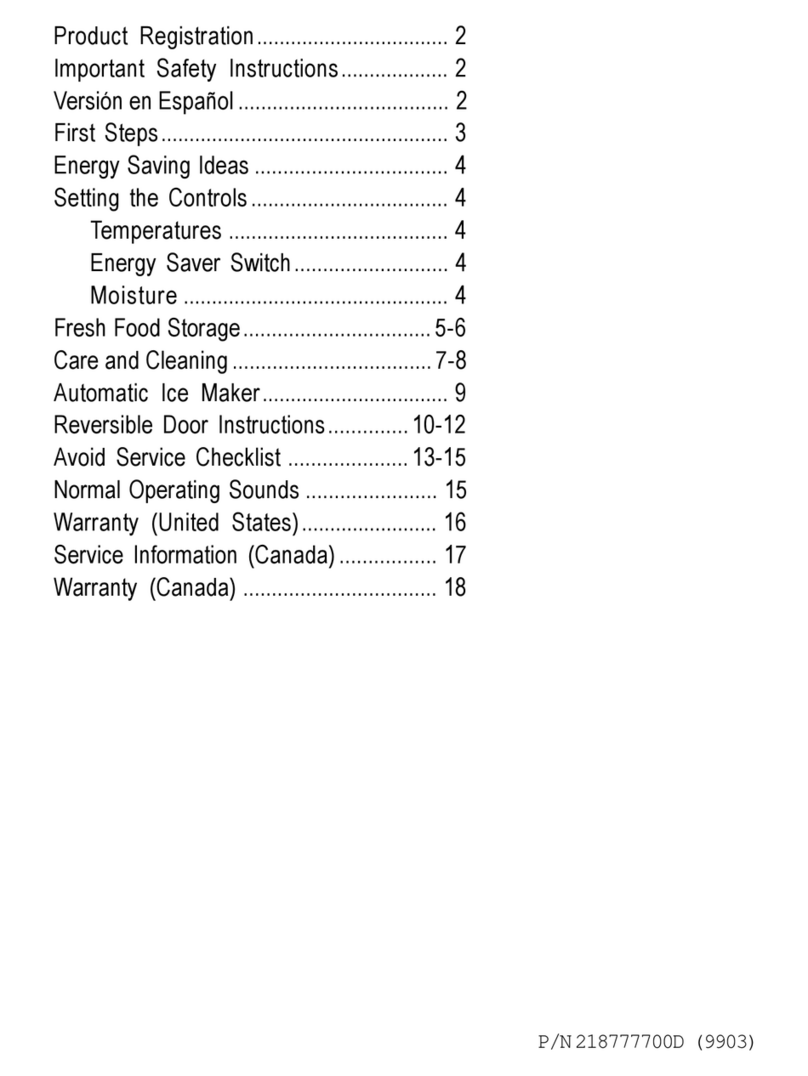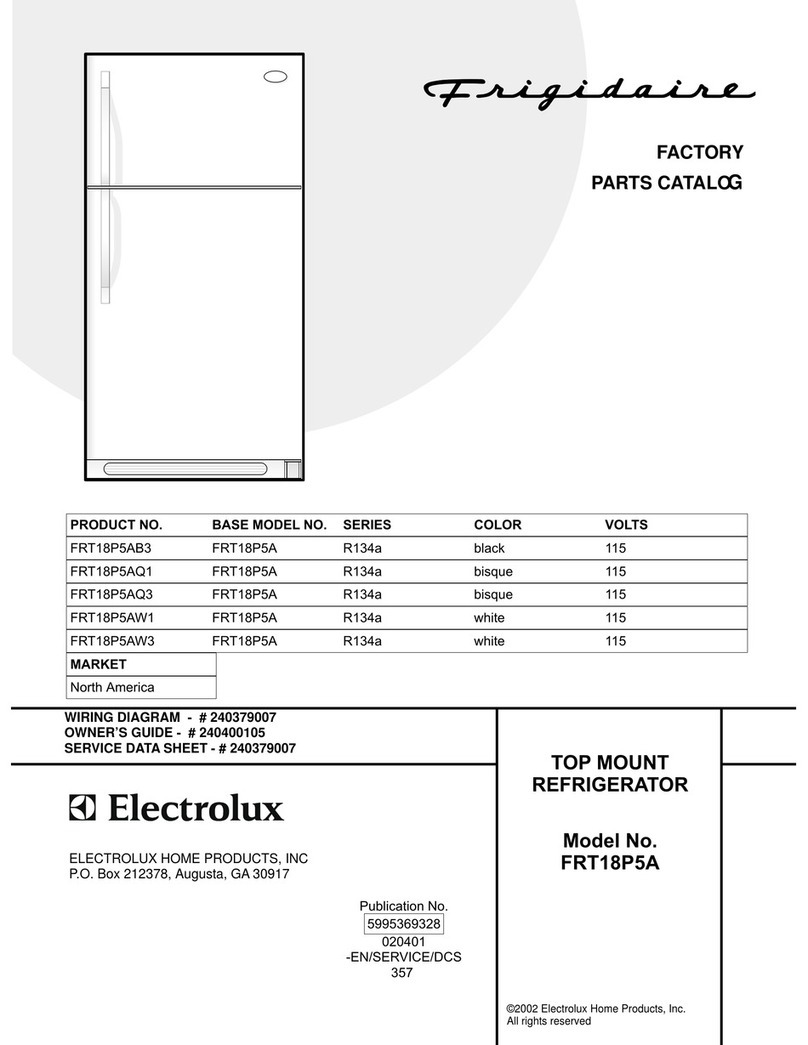
Child Safety
Destroy or recycle the carton, plastic bags, and any
exterior wrapping material immediately after the
refrigerator is unpacked. Children should NEVER
use these items to play. Cartons covered with rugs,
bedspreads, plastic sheets or stretch wrap may become
airtight chambers, and can quickly cause suffocation.
Proper Disposal of your Refrigerator or
Freezer
Risk of child entrapment
Child entrapment and suffocation are not problems of the
past. Junked or abandoned refrigerators or freezers are
still dangerous - even if they will sit for "just a few days".
If you are getting rid of your old refrigerator or freezer,
please follow the instructions below to help prevent
accidents.
Proper Disposal of Refrigerators/Freezers
We strongly encourage responsible appliance recycling/
disposal methods. Check with your utility company or
visit www.energystar.gov/recycle for more information on
recycling your old refrigerator.
Before you throw away
your old refrigerator/
freezer:
*Remove doors.
o Leave shelves in place
so children may not
easily climb inside.
Have refrigerant
removed by a qualified
service technician.
These guidelines must be followed to ensure that
safety mechanisms in this refrigerator will operate
Fault Interrupter (GFI) circuit. Do not use an
extension cord or adapter plug.
If the power cord is damaged, it should be replaced
by an authorized service technician to prevent any
risk.
Never unplug the refrigerator by pulling on the
power cord. Always grip the plug firmly, and
pull straight out from the receptacle to prevent
damaging the power cord.
Unplug the refrigerator before cleaning and before
replacing a light bulb to avoid electrical shock.
Performance may be affected if the voltage varies
by 10% or more. Operating the refrigerator with
insufficient power can damage the compressor.
Such damage is not covered under your warranty.
Do not plug the unit into an electrical outlet
controlled by a wall switch or pull cord to prevent
the refrigerator from being turned off accidentally.
Pressing and holding the On/Off button for 3seconds,
located on the left side of the temperature control
panel will disable your refrigerator's cooling system, but
does not disconnect the power to the light bulb and
other electrical components. To turn off power to your
refrigerator you must unplug the power cord from the
electricaloutlet................
Grounding type
wall receptacle
fDo not, under -'_
any circumstances,
cut, remove, /
or bypass the /
Electrical information
The refrigerator must be plugged into its
own dedicated 115 Volt, 60 Hz., 15 Amp, AC
only electrical outlet. The power cord of the
appliance isequipped with a three-prong grounding
plug for your protection against electrical shock
hazards. It must be plugged directly into a properly
grounded three prong receptacle. The receptacle
must be installed in accordance with local codes
and ordinances. Consult a qualified electrician.
Avoid connecting refrigerator to a Ground
Power cord with
3-prong grounded plug
To avoid personal injury or property damage, handle
tempered glass shelves carefully. Shelves may break
suddenly if nicked, scratched, or exposed to sudden
temperature change.
